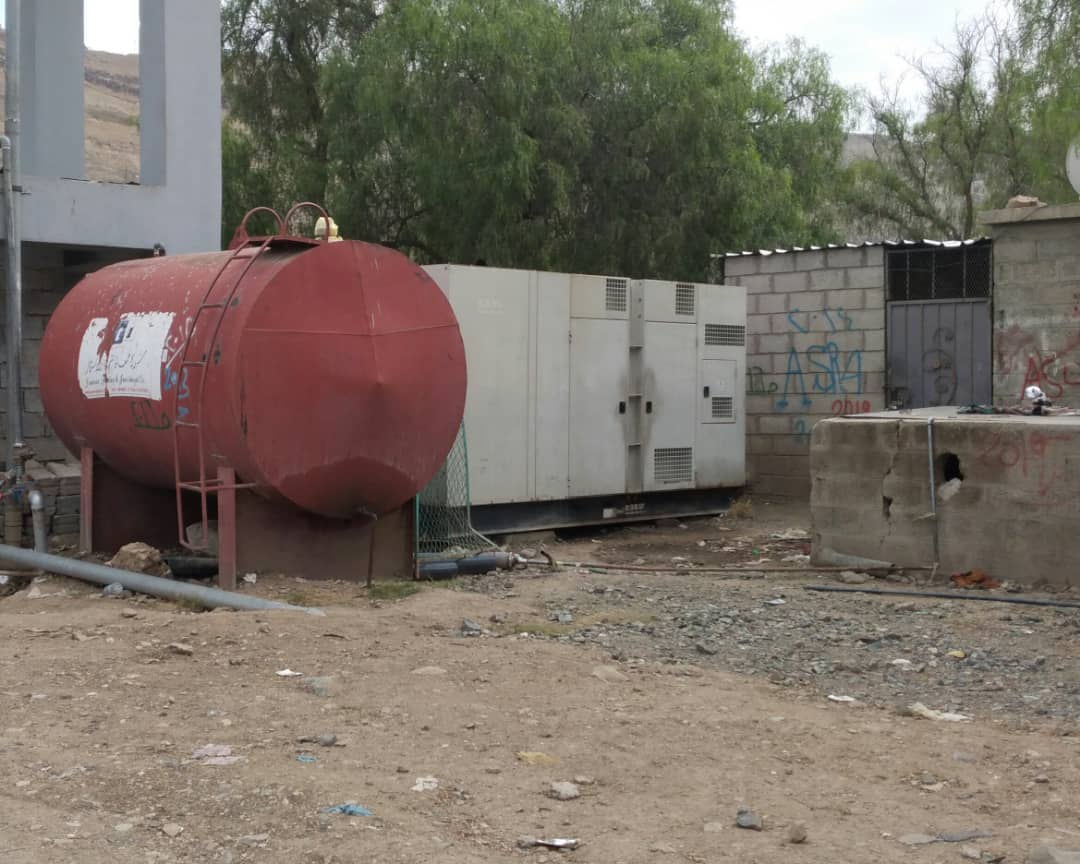
Enhancing energy reserves: Stocking of fuel
Some water utilities, with the support of international organizations (such as UNICEF), have built large fuel tanks to store a strategic reserve of three months’ fuel consumption. This practice enables water utilities to absorb and overcome frequent fuel shortage crises. Three-month fuel demand was estimated for each location and tanks were installed together with generators to ensure the continuous operation of wells even during unexpected fuel crises. This practice is effective to secure the utility’s service and revenues and contributes to the credibility of the organization. This practice has been applied by IBB LC and many other utilities.
Description of the problem
The successive crises of fuel shortages have caused severe interruptions and complete suspension of water service delivery by most water utilities in Yemen. This has eroded their credibility and weakened the customer-utility relation, especially in those cases where most wells and the wastewater treatment plant stopped for several months. The situation was worse because of the arrival of successive waves of internally displaced persons from regions in conflict. Such unprecedented pressure on utilities occurred while all public electricity sources were at a total halt with utilities completely depending on their generators. The war conditions generated a considerable increase in operation and maintenance cost, which the utilities were only able to cope with by reducing their service level. This implied among others:
- A strong reduction in water production capacity.
- More frequent sewage overflows causing pollution in many neighbourhoods as well as the discharge of untreated wastewater as treatment plant operation was suspended for several months causing severe downstream pollution. These problems increased the outbreak of diseases including the world worst cholera outbreak in recent times.
- Delayed or suspended payment to staff which led to an outflow of qualified staff.
Description of the good practice
The utility gradually increased its resilience capacity by designing large fuel tanks at different locations with a capacity to provide for three months of operation. The tank volume was established based on a calculation of fuel consumption for the different activities of the utility. Construction of the tanks was carried out by contractors. The large stock of fuel helped utilities to overcome periods of short supply thus ensuring a more continuous operation. Furthermore new more efficient generators were installed to pump water from the wells. Activities including the fuel were financed to a considerable extent by grants from international donors.
Impact and sustainability of the good practice
This practice helps utilities to ensure the necessary fuel to carry out its activities and its operational works and in the case of Sana’a LC it also safeguards the operation of the wastewater treatment plant, preventing any further diversion of untreated wastewater. The practice is considered important and effective for the utility to secure its services, built back the trust of the customers, and generate enough resources to pay its employees. The practice allows utilities to:
- Increase the water production capacity to guarantee a minimum secured water supply; (in the case of Sana’a LC: Three periods of eight hours per connection per month)
- Re-build the utility’s image and customer relationship
- Increase utility revenues which in turn resulted in the return of some qualified staff
- And in the case of Sana’a LC to support the operation of the WWTP thus reducing the negative impact on the environment
Required resources
This practice requires the provision and construction of large fuel tanks (Figure 26). Enough land space in the target areas/wells and an adequate source of financing to be able to pay for construction as well as for the strategic volume of fuel.
Figure 26 example of on-site diesel tank at a water well